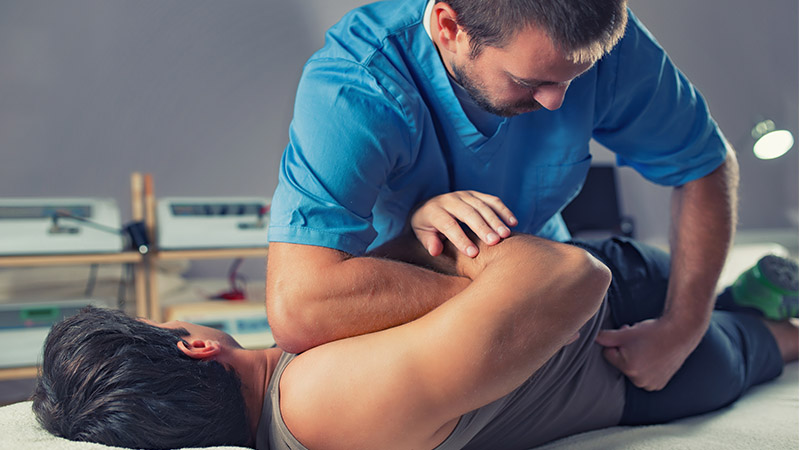For a hands-on approach to your health, let the techniques of osteopathy banish your body’s aches and pains. Here’s what you need to know about finding head-to-toe harmony with an osteopath in Hong Kong.
Full-on muscle aches when you get up from a chair. A pain in your hip when you carry a heavy bag. Freaky twinges in your elbow after too many yogic downward dogs. If your “ooohs” and “ahhhs” these days are more of a result of body pain than pleasure, you might benefit from osteopathy.
Much like chiropractic methods and physiotherapy, osteopathy looks at problems of the musculoskeletal system (your bones, muscles, tendons and ligaments). The difference is that osteopaths focus on issues across the whole body – issues which, like a Hong Kong Sunday brunch, might be lasting longer than is healthy!
What is osteopathy?
Osteopathy is a way of detecting, treating and preventing health problems by moving, stretching and massaging a person’s muscles and joints. Classified as a holistic or alternative medical treatment, it’s based on the principle that our wellbeing is dependent on our bones, muscles, ligaments and connective tissue all functioning smoothly together. The goal of the osteopathy is for its techniques to bring harmony, balance and energy to the entire body. And it does this in a responsible and healthy way that several Chardonnays cannot!
When should I see an osteopath?
Most people see an osteopath for help with conditions that affect the muscles, bones and joints; the list can be endless! Common ailments can be longstanding or sudden. They might include lower back pain, neck pain, shoulder and elbow pain (tennis elbow for example), arthritis, sports injuries, muscle and joint pain. Despite a lack of hard scientific proof, some osteopaths claim to be able to treat conditions such as headaches, hormonal problems, digestive disorders, depression and issues in babies such as colic, feeding difficulties and excessive crying. Treatment is gentle, though it’s not uncommon to feel sore in the first 24/48 hours after treatment.
How is osteopathy performed?
Osteopathy is carried out by an osteopathic physician who uses physical manipulation, stretching and massage to increase the mobility of your joints, relieve muscle tension and enhance blood supply to tissues. They don’t focus on the problem area; rather, they use their hands to balance all the body systems. One popular method is cranial osteopathy. This uses light pressure and is the favoured choice for treating babies and children. Visceral osteopathy, on the other hand, works to reduce tension and tightness around your organs. Read more about techniques here. (And don’t try them yourself at home, folks!)
What should I expect from an osteopathy session?
First sessions comprise a full medical history and investigation of the complaint. Depending on your area of discomfort, you may be required to remove some clothing for the examination, and to perform simple movements. Next, you’ll receive a diagnosis and treatment plan. Osteopaths are also trained to identify when a patient needs to be referred to a GP or needs further tests such as MRI scans or blood tests.
Where can I find osteopathy in Hong Kong?
You don’t need a medical referral to visit an osteopath; most patients self-refer. Always make sure your osteopath is qualified, too. For a list of Hong Kong-based practitioners who were qualified in the UK, for example, log onto the General Osteopathic Council (GOsC) here. Please note that due to COVID-19, some osteopaths have temporarily closed their clinics. Happily, many still offer urgent and/or remote consultations.
This article was independently written by Expat Living and is not sponsored – it’s informative only and not intended to be a substitute for professional medical advice, diagnosis or treatment, so should not be relied upon for specific medical advice.
Read more on men’s and women’s health in our Health & Fitness section.






